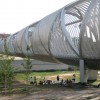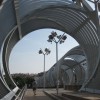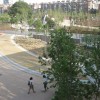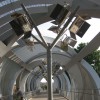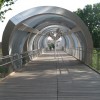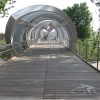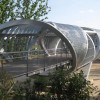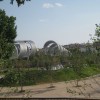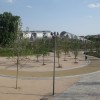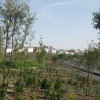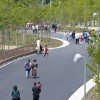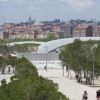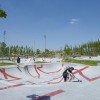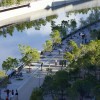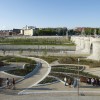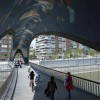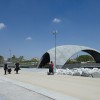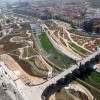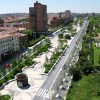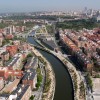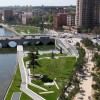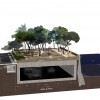Madrid Rio by West 8 and MRIO
Tranquilo might as well be the motto of Madrid. It’s commonly used to tell someone to “take it easy” or “relax," perfect for these trying economic times. For those Madrileños who might find themselves a little stressed (and overheated) these days, the Madrid Rio project by West 8 Urban Design & Landscape Architecture has created a recreational zone along the Manzanares River that will allow people to enjoy an area previously referred to by many as “what river?”
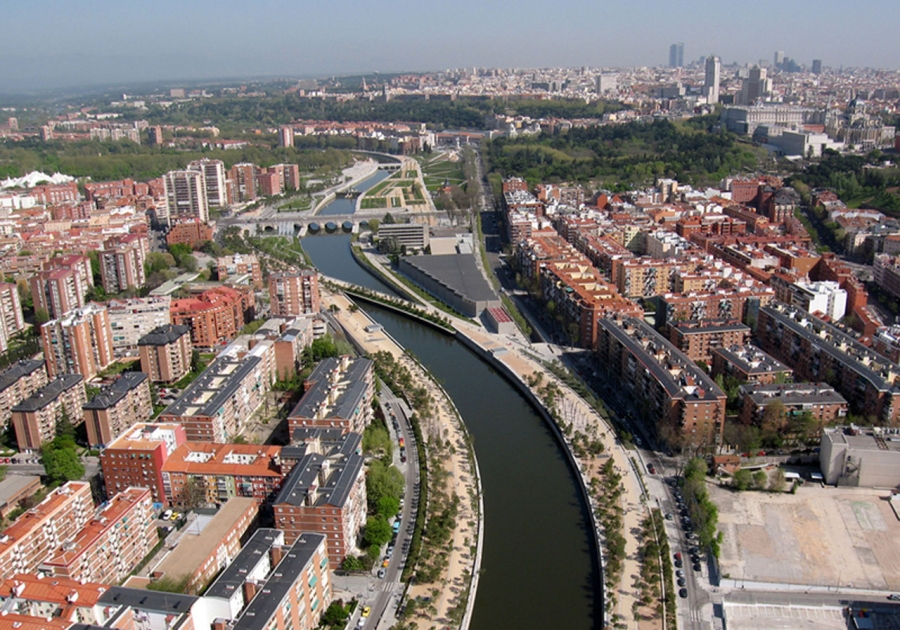
It’s an understatement to say that the area around the river had been all but abandoned until early 2005, when the government announced an international search for urban architects to renovate the area. West 8, along with MRIO Arquitectos, won the contest and work began on the ambitious project in 2006. The process consisted of completely transforming the deserted area into a family-friendly public park, now known as the Madrid RIO.
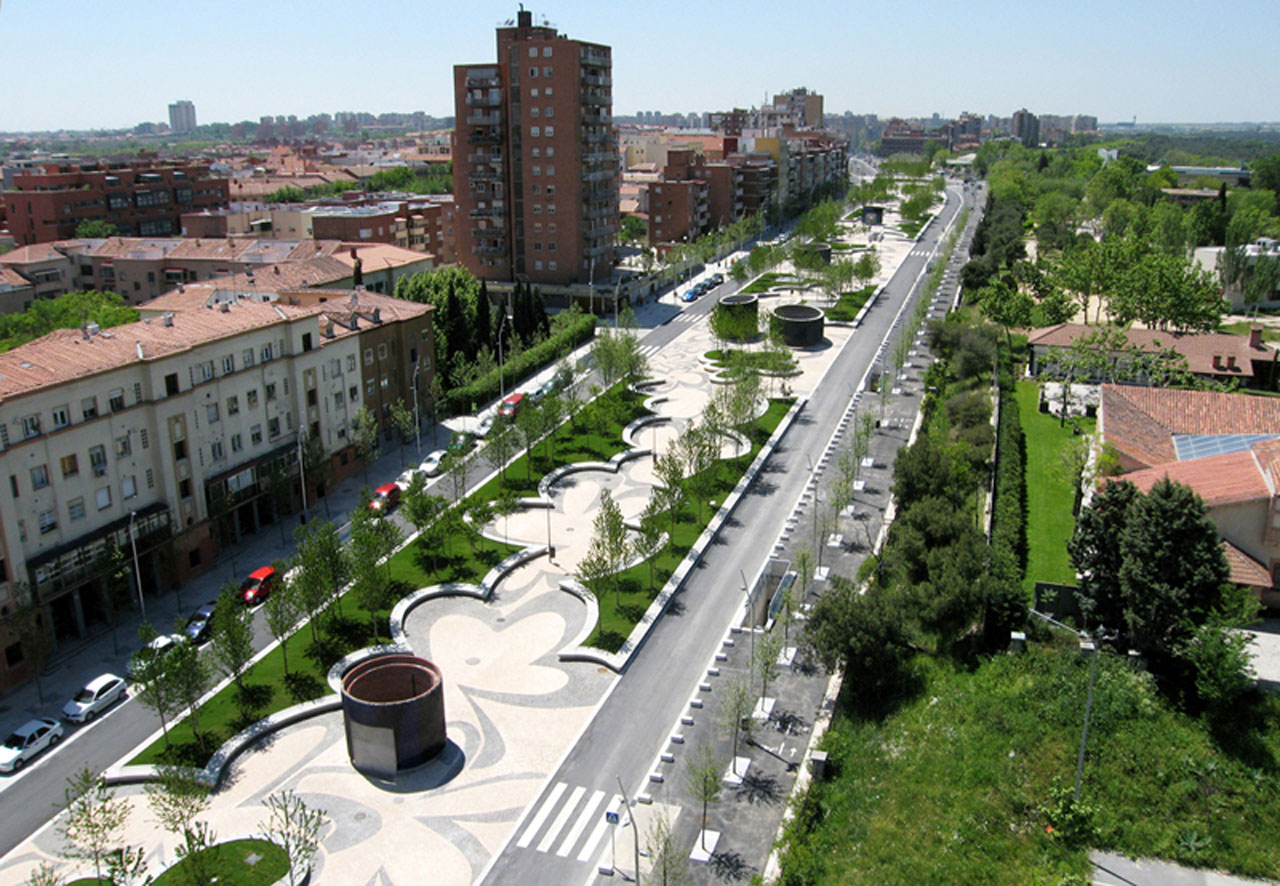
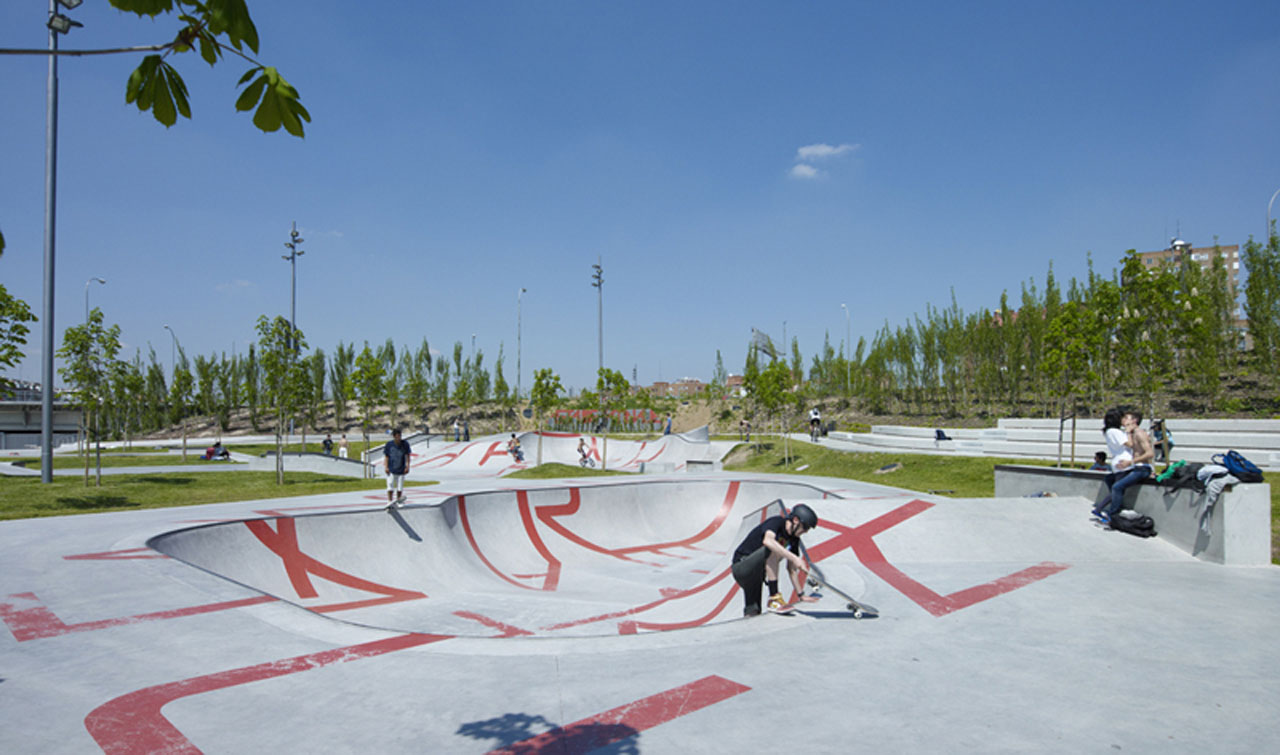
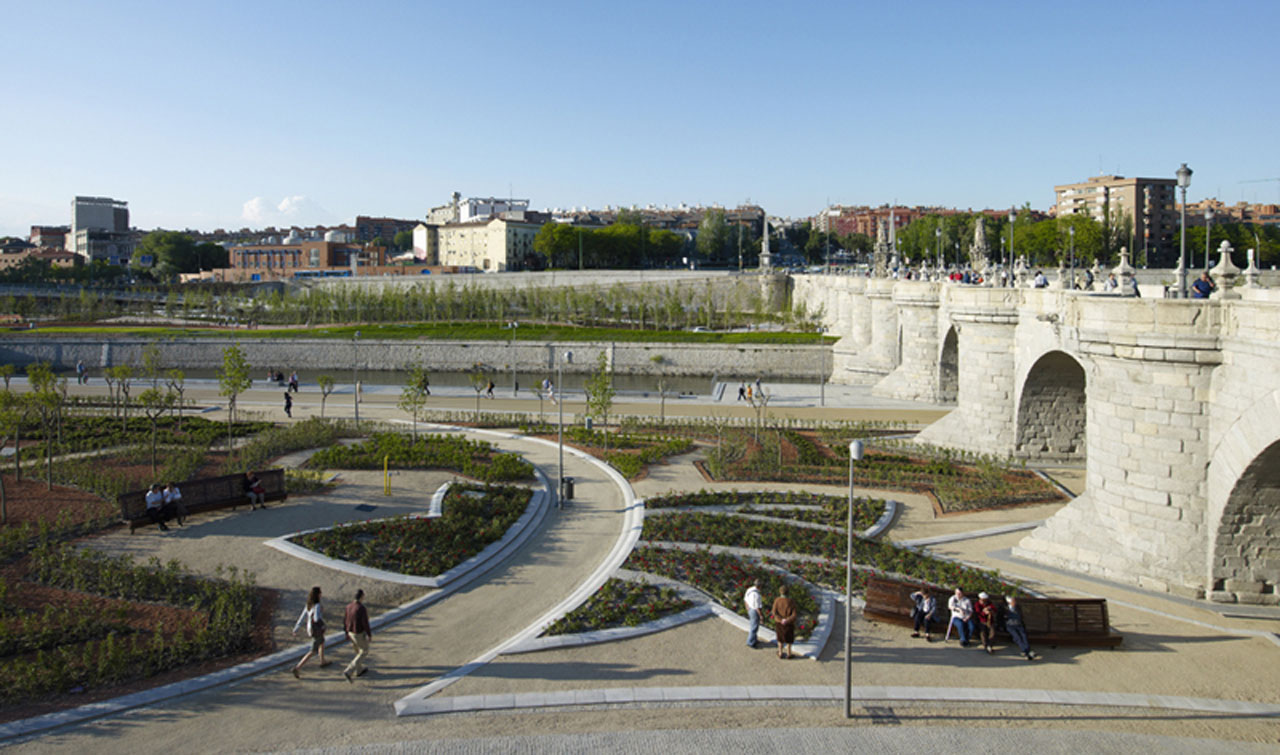
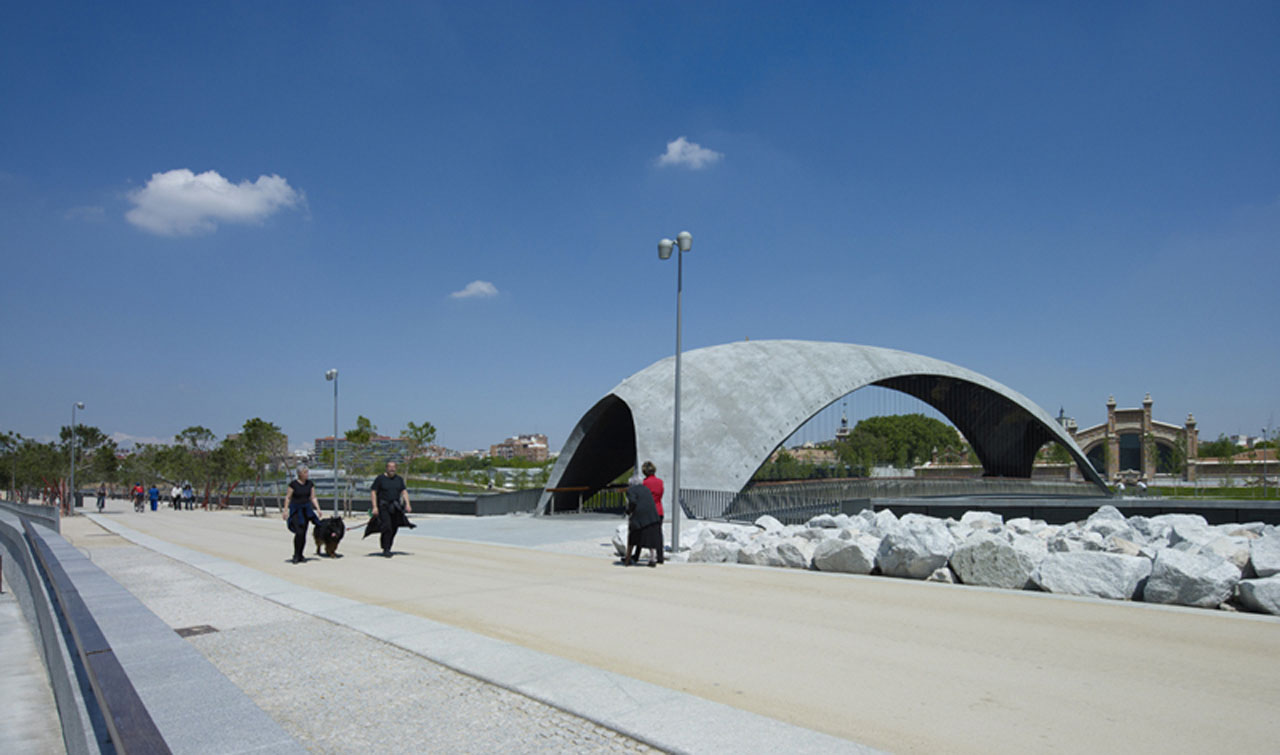
The project was an immense undertaking, to say the least, requiring massive infrastructure redesign and about 8.5 billion USD (6 billion Euros) to fund. Perhaps the biggest hurdle was the first step, which required submerging the infamously gnarled Madrid traffic through 43 km (approximately 26.7 miles) of new underground tunnels. It was an incredibly bold and tedious project that often infuriated residents despite promises of improved quality of life and higher property values.
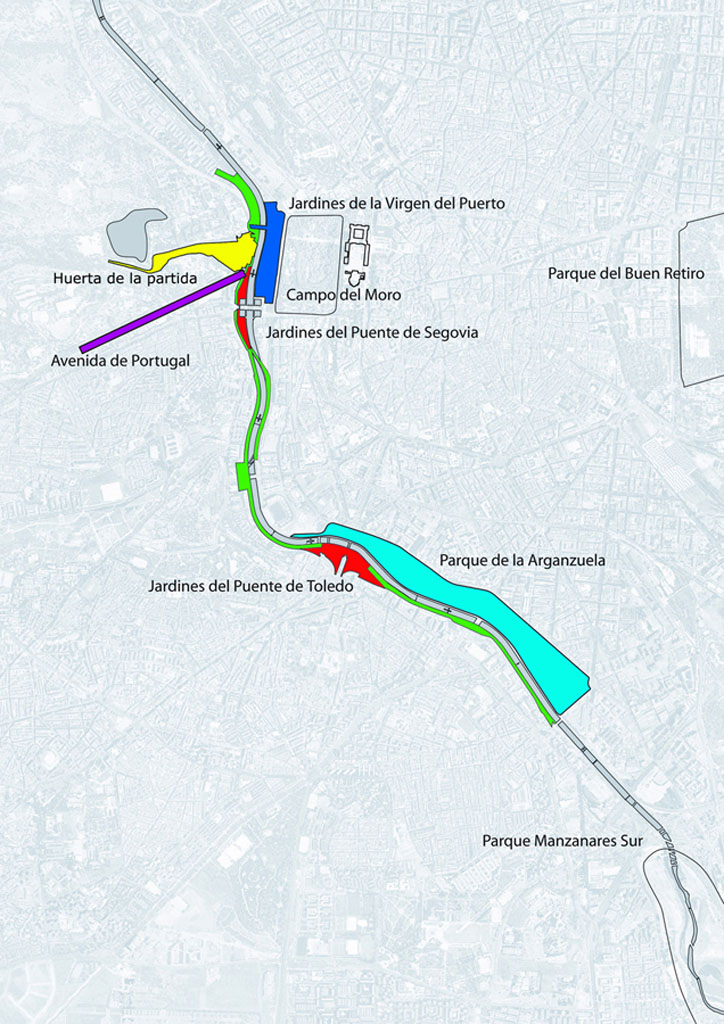 Once the tunnels were operational underground, the progression above ground started to emerge, with landscape architecture never before seen on this scale. The new areas along the river were designed by using the “3+30” method of dividing 80 hectares into a “trilogy of strategic projects” that separate the elongated area into 47 various sub-projects including a large pine tree park, multiple sports areas, 30 km (approximately 18.6 miles) of bicycle paths, 11 new playgrounds, six installations for the elderly, and even a sandy beach with humidifiers, parasols, and a kayak-paddling area.
Once the tunnels were operational underground, the progression above ground started to emerge, with landscape architecture never before seen on this scale. The new areas along the river were designed by using the “3+30” method of dividing 80 hectares into a “trilogy of strategic projects” that separate the elongated area into 47 various sub-projects including a large pine tree park, multiple sports areas, 30 km (approximately 18.6 miles) of bicycle paths, 11 new playgrounds, six installations for the elderly, and even a sandy beach with humidifiers, parasols, and a kayak-paddling area.
The Madrid RIO project has also managed to embrace the area's history by renovating its most historical bridges. The Puente de Segovia, the oldest bridge in Madrid (1582), the Puente de Toledo (1684), and the Puente del Rey (1816) have all been reformed by improving railings, widening walkways, and adding lanes for the new bike path, the Green Ring (Anillo Verde), that loops around the city.
In addition to restoring these historic monuments along the river, two new bridges were added to the existing bridges and walkways. The ultra-modern Arganzuela Footbridge was designed by Dominique Perrault and cost a steep 18.5 million USD (approximately 13 million Euros). Covered by interlocking curved metallic strips, the spiraling silver bridge is a large walkway that provides an expansive view over the river and park areas below. It divides into two “arms” that allow visitors to stroll along the entire 278 meter (approximately 912') bridge to the other side of the river or head downward to the water park.
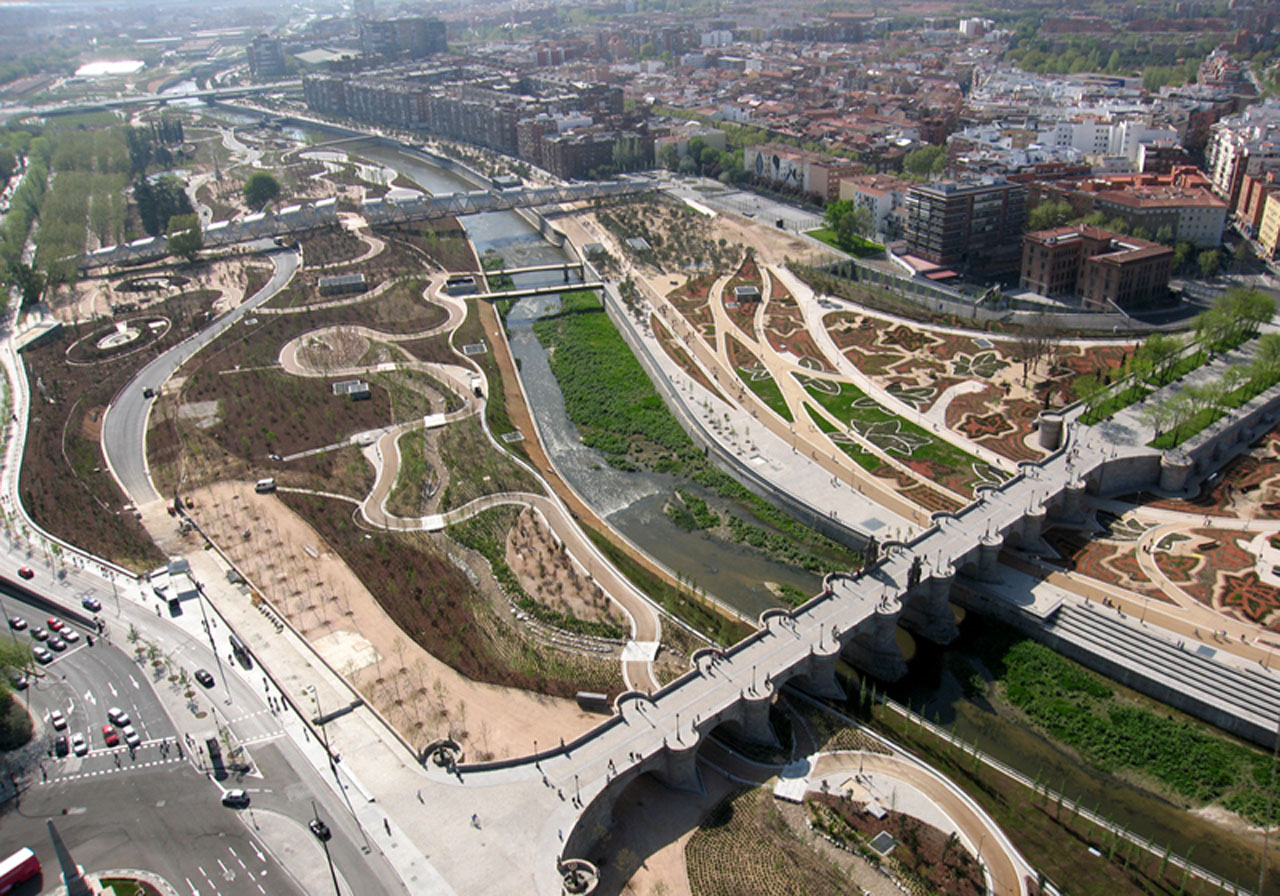
The Cascara bridges also stand out from more traditional walkways. It’s hard not to notice two identical gray bridges, which look like two inverted canoes uniting the river banks. The interior roofs of these bridges feature mosaics by Spanish artist Daniel Canogar that pay homage to local flavor by depicting some of the area’s most colorful residents.
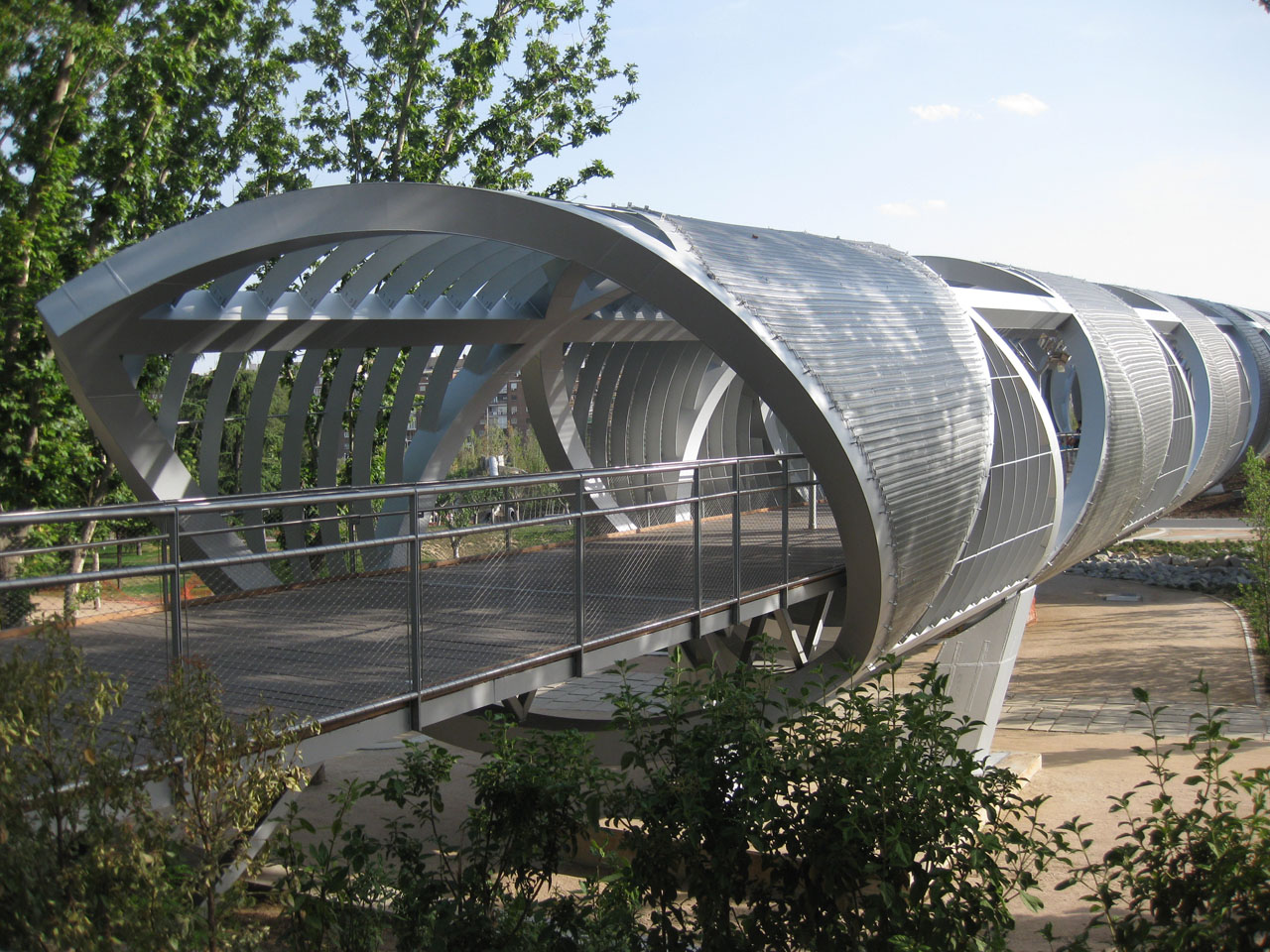
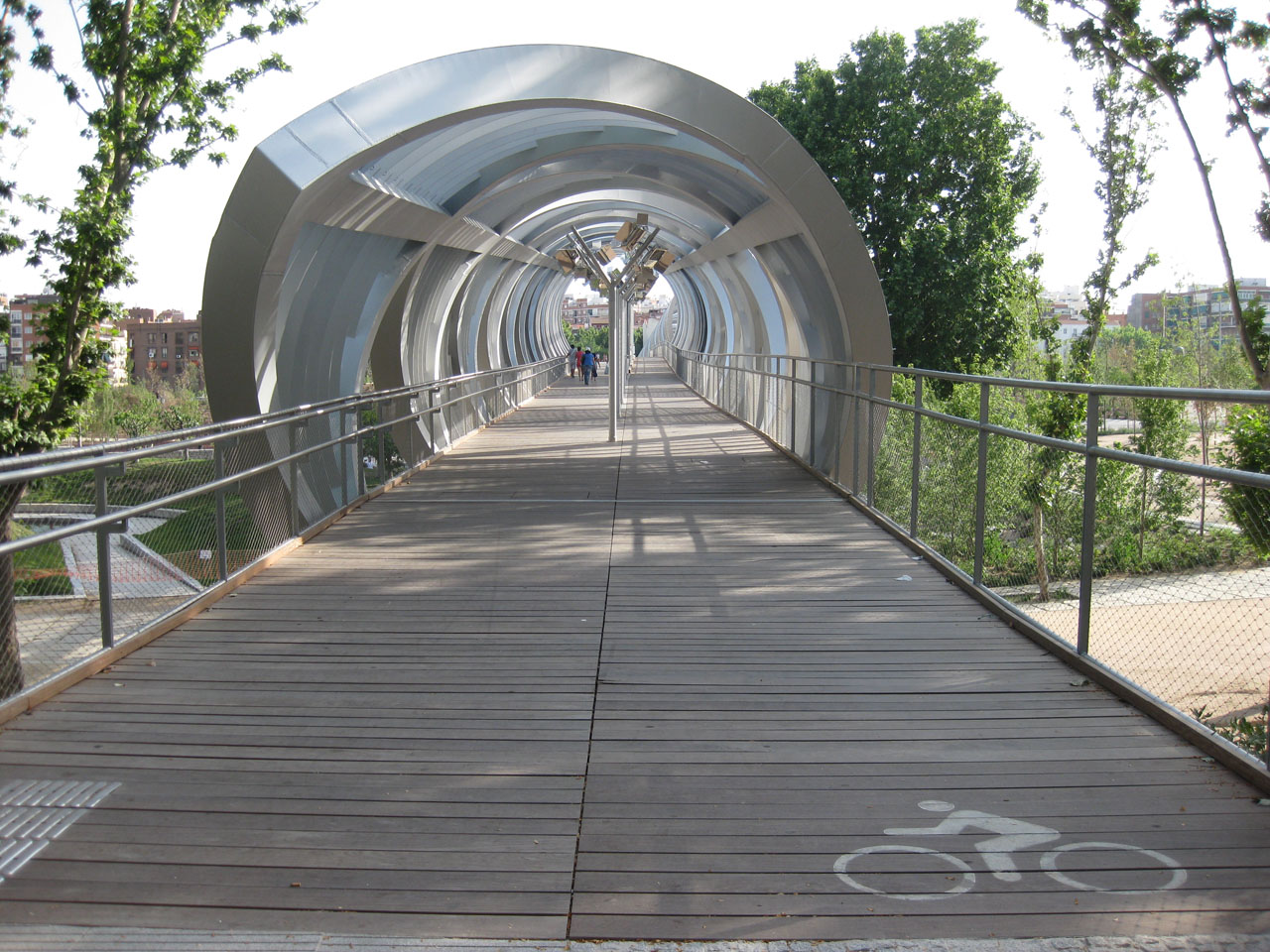
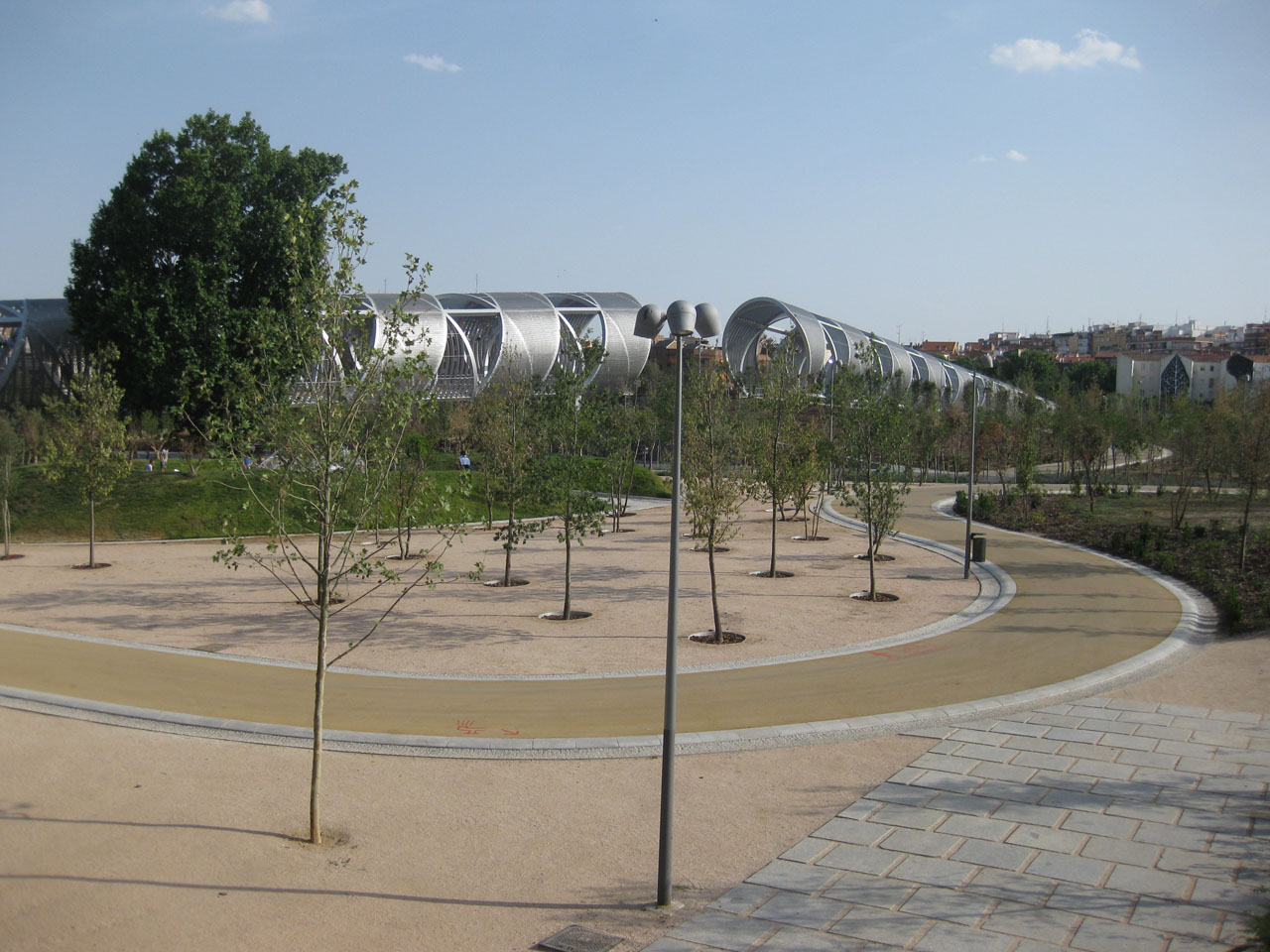
The Madrid Rio project, although completely functional, is still a work in progress, with a few finishing touches to be finalized. For example, the river doesn’t have much water, yet – it’s currently a murky mix of water, grass, and marsh. The installation of 13 new kilometers (approximately 8 miles) of pipes and storm tanks to funnel clean water through the river is planned when construction is complete.
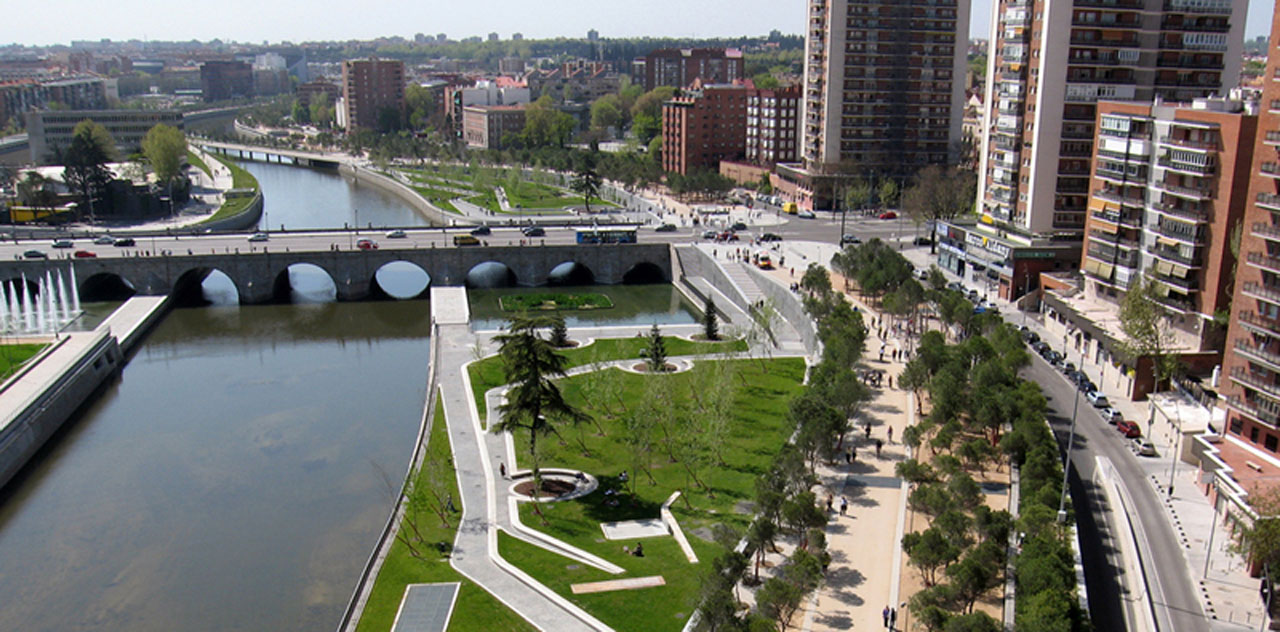
However, thanks to Madrid’s typical “build it and they will come” mentality, the area is already booming with families, runners, bicyclists, sunbathers, and, of course, the constantly strolling elderly for whom the city is famous. After almost seven years of construction and 6 billion Euros, residents and tourists alike can now enjoy this reclaimed multi-use recreational green space.

Nicole Jewell
Nicole graduated from Georgia State University with a Post Graduate degree in Spanish to English Translation and a B.A. in Spanish and International Business. Presently living in Madrid, Nicole works as a freelance writer and translator and enjoys traveling around the Iberian peninsula taking photos of Spain's rich blend of historic and modern architecture. Her articles and photos have been published in various trade publications and websites.
Website: www.passtheham.com/
